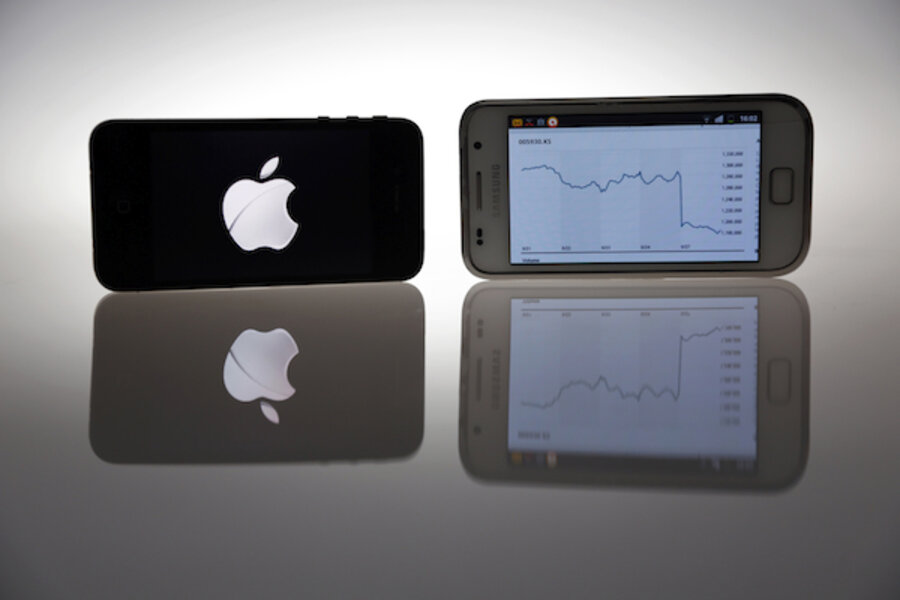Samsung to pay Apple $1 billion? Not so fast.
Loading...
On Friday, a jury in California ruled that Samsung had infringed on a range of Apple patents, and ordered the Korean company to pay Apple more than $1 billion in damages. The verdict, in the words of one onlooker, was a "major win" for Apple, which is now seeking an injunction against at least eight Samsung handsets that use the affected patents. It's a major mess for Samsung.
But in a message to employees today, Samsung vowed it would not let the ruling stand.
"History has shown there has yet to be a company that has won the hearts and minds of consumers and achieved continuous growth, when its primary means to competition has been the outright abuse of patent law, not the pursuit of innovation," the memo read, according to CNET. "We trust that the consumers and the market will side with those who prioritize innovation over litigation, and we will prove this beyond doubt."
A longshot? Well, not necessarily.
As CNN points out, plenty of legal experts expect the verdict to be overturned. "This story is far from over," writes Duke law professor Mark Webbink, who has wondered if the jury didn't perform a bit of a rush job.
"[O]ne of the plays you'll see next will likely be a Rule 50(b) motion by Samsung, and that's the one where you ask the judge for various relief on the basis that no reasonable jury could find what it did find on the evidence presented," Webbink added.
That kind of legal wrangling, of course, could take years. In the meantime, we're likely to see some more immediate effects on the tech industry at large. Among them: fewer tablets and smartphones that look like Apple iPads and Apple iPhones. Here's a portion of a BGR interview with Christopher Carani, the chairman of the American Bar Association’s design rights committee:
[T]he business folks will need to provide industrial designers more creative license; no longer can they huddle around Apple’s designs. Again, this is good news for consumers as it will mean new exciting designs. Having visited many industrial design schools the world over, I am highly confident that the world’s leading industrial designers, including the impressive young American industrial designers coming out of design schools across the nation, will rise to the challenge of creating unique, appealing and different smart phone and tablet designs.
Read the interview in full here. And for more on how technology intersects daily life, follow us on Twitter @venturenaut.





